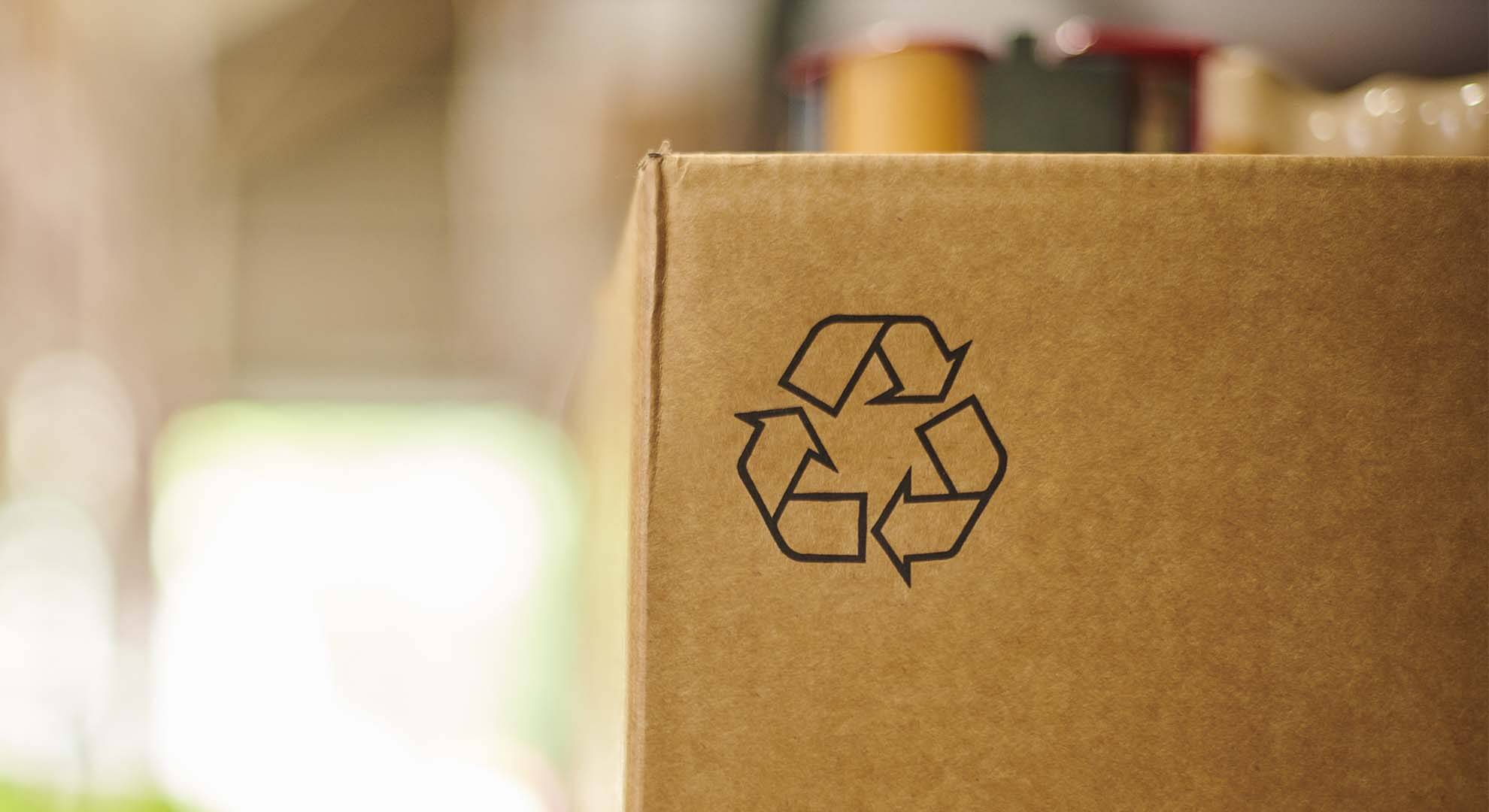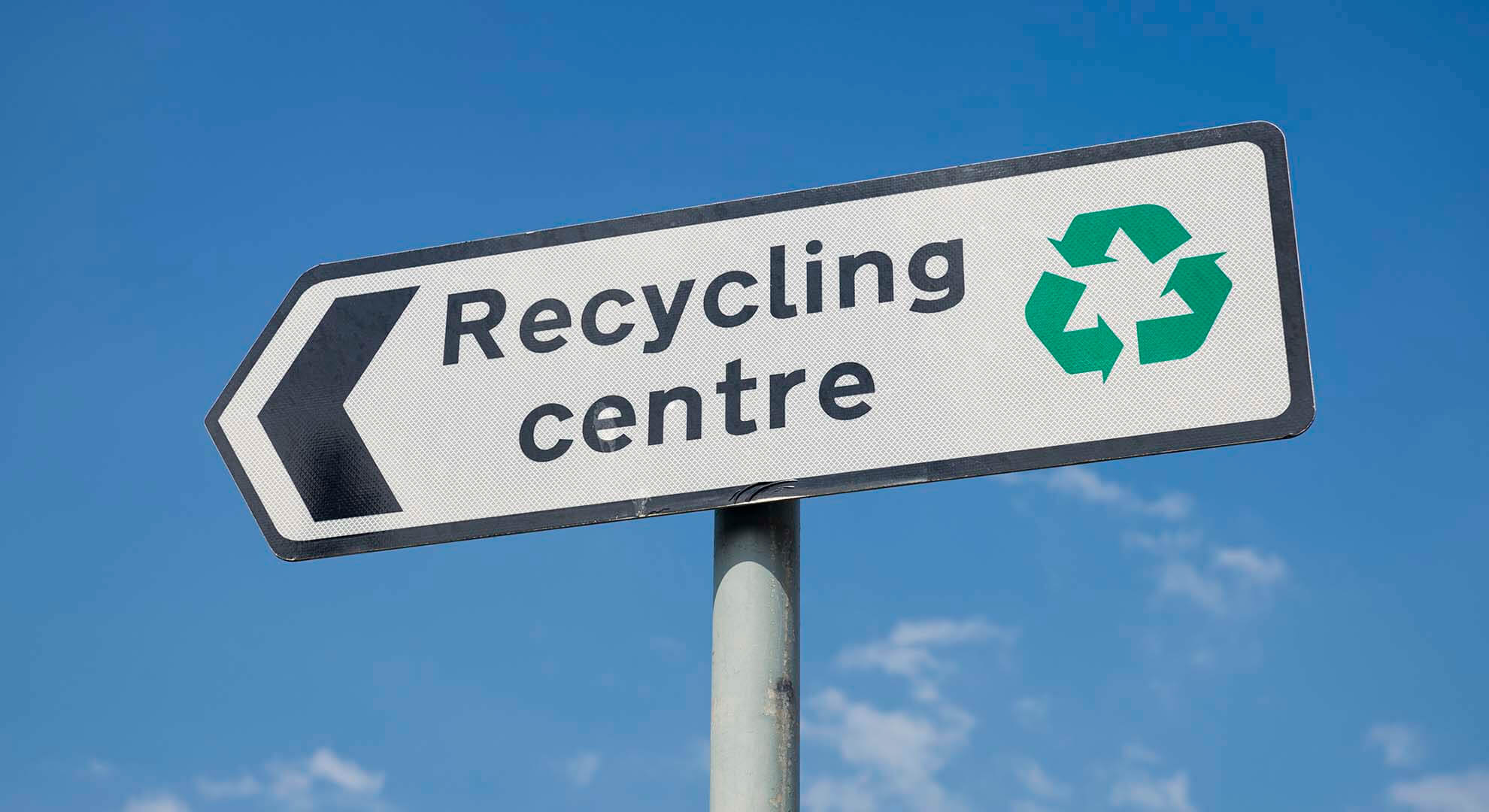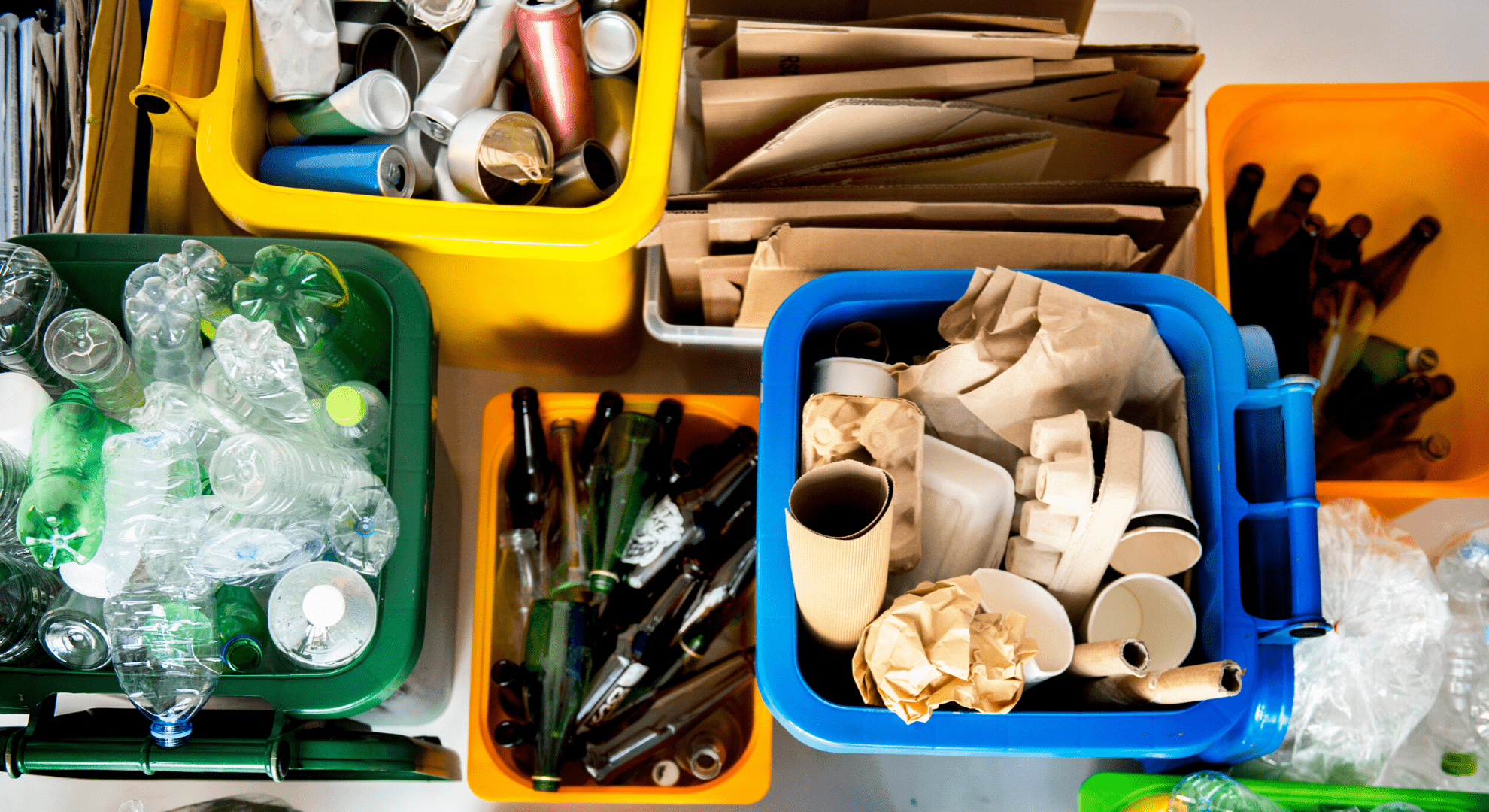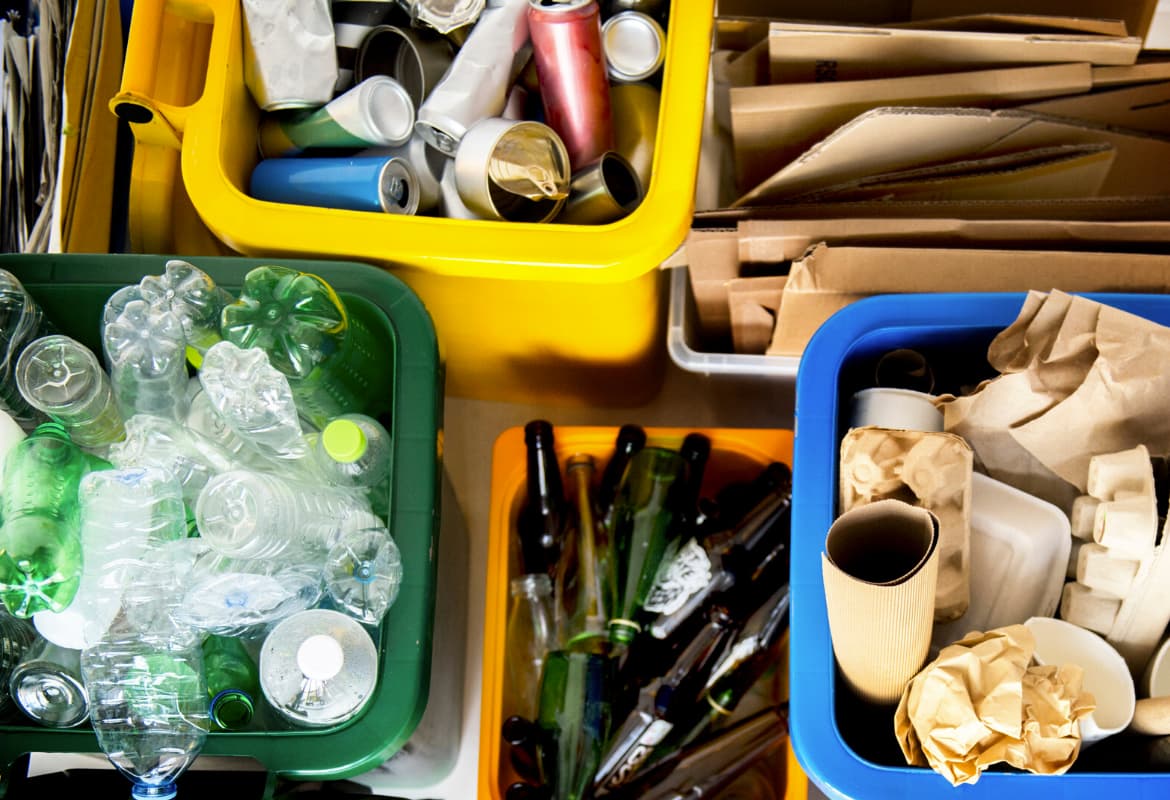
Recycling packaging symbols explained
Packaging labels and recycling symbols appear on lots of the products we use in our daily lives.
They are there to help us find out how different types of packaging can be recycled. But let’s be honest. Sometimes it can feel like trying to read hieroglyphics.
So what do the different recycling symbols actually mean? And how can they help you to up your recycling game?
On-pack recycling label (OPRL)
Recycling labels tell you what type of packaging a product has and whether the packaging is recyclable. If it is recyclable, the label will also show whether you can pop the packaging in your household recycling bin or if you’ll need to take it to your local recycling centre.
We’ve listed the common recycling labels below. They appear on all sorts of packaging – from soft drink cans to bread bags and plastic toiletry bottles - so give them a check next time you’re ready to throw them out and you'll be fluent in no time.
Not all packaging will have a recycling label, but this doesn’t mean you can’t recycle it. If you’re not sure on what you can recycle in your area, try our handy recycling sorter.
Widely recycled
A nice easy one to start you off. It means that at least 75% of local councils provide household recycling collection facilities for that type of packaging. You might need to remove lids or plastics films so keep an eye out for other labels that might sit beside this one.

Check local recycling
This symbol is used when 20% - 75% of councils can recycle that packaging type. You can find out if your area is included by using the recycling sorter - save the page as a favourite on your phone so you can check back easily.

Not currently recycled
Less than 20% of councils recycle this type of packaging but don’t despair just yet. Check with your local council before relegating it to your general waste bin. They might just be one of the magic 20%. Also, recycling facilities are evolving all the time so it might be recycled in the future.

Widely recycled at recycling points – check locally for kerbside
If you see this symbol on packaging then over 75% of councils recycle this type of packaging but less than 75% collect it through household recycling - it might be at a recycling bank instead. Sounds tricky but if you have our recycling locator to hand you’ll be laughing all the way to the recycling bank.

Plastic films
Some plastic films can also now be recycled at supermarkets’ carrier bag collection points.
Look out for the 'Recycle with carrier bags at large stores - not at kerbside' message on your bread bag, breakfast cereal, toilet and kitchen roll wraps, grocery produce, multipack shrink wrap and magazine wraps then just drop off when you do your weekly shop.
You’ll normally find the collection points near the entrance or after the tills.
Find out what to do with plastic film.

Metal paint cans
Does what it says on the tin. When you see this symbol (if you’re anything like us and have dripped paint down the side you might have to hunt for it) your empty metal paint can is accepted for recycling at most local recycling centres. Check your council’s website for more information.
Find out what to do with paint cans.

Other packaging and recycling symbols
Recycling symbols don’t just stop there. Other symbols can be found on a variety of packaging and explain if an item can be recycled or not, how to dispose of the item, or whether it's made from recycled material. You might have already spotted these on things around your house, but how many would you know the meaning of?
Read on to find out how many you guessed correctly...
Mobius loop
Most of us are familiar with this one - the Mobius loop - but you might not know that it shows that the packaging is capable of being recycled but it’s not necessarily accepted by all recycling collection facilities. Best to check with your local council on this one before you chuck it into your recycling bin.
Sometimes you’ll spot a Mobius loop used with a percentage figure in the middle. This explains that the packaging contains x% of recycled material.

Tidyman
There’s some debate on the origins of the Tidyman icon but one thing’s for certain, he’s become one of the most widely recognised symbols in the world. Although not relating to recycling, Tidyman is a reminder to be a good citizen by disposing of the packaging carefully and thoughtfully, without littering. One to think about while you’re drinking your next can of Bru.
Find out more at Keep Scotland Beautiful.

The Green Dot
Not to be confused with the Mobius loop, the green dot doesn’t always mean that the packaging is recyclable, will be recycled, or has been recycled. It just means that the producer has made a financial contribution to the recovery and recycling of packaging.

Plastics
This is where things can seem confusing. Numbers from 1 to 7 within the 'chasing arrows' symbol (or Resin Identification Code) shows the type of plastic resin used to make the packaging. As a general rule of thumb if it has a number 1 or 2 in the centre then it can be picked up through most household recycling collections - but always best to check with your local council for details in your area.

Glass
Tidyman’s second cousin - let’s call him Bottleman - shows up in this symbol, popping his glass into the bottle bank as a reminder to recycle your glass bottles and jars. If you’re using a bottle bank, remember to separate colours, otherwise you can use your glass household recycling collection if you have one.
Find out what to do with glass.

Recyclable aluminium
One for the drinks cans and deodorant bottles, this symbol shows that the item is made of recyclable aluminium.

Recyclable steel
This symbol may look like a magnet-torch hybrid (Dragon’s Den here we come) but it actually shows that the product is made of recyclable steel.

Waste electricals
Waste electrical items - from household appliances to mobile phones and IT equipment - are not to be disposed of in your wheelie bin.
Find out what to do with electrical items.

Compostable
The 'seedling' symbol is the registered trademark of European Bioplastics and means that the product has been certified to be industrially compostable according to the European standard EN 13432/14955.
Keep these out of your recycling bin though, as they can’t be recycled they will have to go in with your general waste. Try using reusable options instead for things like coffee cups and takeaways.

Paper
To be given the National Association of Paper Merchants' mark, paper or board must be made from a minimum of 50%, 75% or 100% genuine waste paper and/or board fibre, and shouldn’t contain mill produced waste fibre.

Wood
The Forest Stewardship Council (FSC) logo identifies products which which contain wood from responsibly-managed forests, and complies with FSC’s rules.

Still unsure?
Firstly, give yourself a pat on the back for getting to the bottom of this page. It’s a long one so well done! If you’re still unsure if an item can be recycled or not, visit our what to do with page or try out the recycling locator.
Discover similar articles
- Article

- Article

- Article
- Tool

